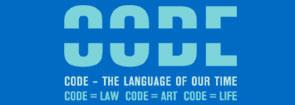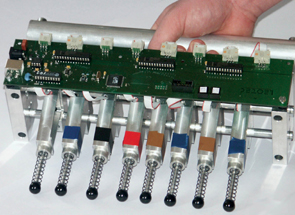| |
|
|
|
|
||
|
||||||||||||||||||||
| |
|
|
|
|
 |
|
 |
|||
| |
||||||||||
| |
||||||||||
 |
|
|||||||||
| |
||||||||||
| |
||||||||||
| |
||||||||||
| |
 |
|
Listheseanalysegerät: Distinction / u19
Sigrun Fugger and Martin Leonhartsberger have developed a medical analysis device capable of measuring the amount of slide between two vertebrae. The u19 jury was especially taken by unconventional solution combining high-tech features with low-tech ones. The project A Device for Measuring and Analysing Spondylolisthesis concerns itself with an ailment afflicting much of the population: when vertebrae slip forward over another vertebra and the resulting complications. Our objective was to detect such "slipped vertebrae" at an early stage and thus be able to prevent surgery by physiotherapeutic treatment. The idea for using this kind of diagnosis was first conceived more than ten years ago by the qualified physical therapist Johann Leonhartsberger (Head of Physiotherapy at the Wagner Jauregg Regional Neurological and Psychiatric Clinic in Linz). The so-called provocation test is conducted by trained therapists and is now an accepted method. The suggestion to measure this phenomenon with the aid of an analysing device goes back to June 2001. In February 2002, I decided to work on this idea as a graduation project. Sigrun Fugger and I began to look for a company which could finance and construct this device. After several setbacks, we found LeoTec – they agreed to support and finance the project. In return, LeoTec was given all rights to the development. After initial difficulties in getting the project approved, development began in summer 2002. Project supervisors were the engineers Franz Cibej and Alfred Mair. The objective was to develop a diagnostic device (the mechanics, electronics, micro-controller software, PC software (NT, 2K, 9x)). The results of the analysis were to be presented graphically in a way which was attractive and easily understandable to the doctor or therapist treating a patient. To begin with, development went very quickly, the first functioning electronic circuit and the PC program were completed by November. Yet problems began to surface in details. The electronics worked in principle but falsified results by as much as 35 per cent. Now and then, during USB transfer, the PC software "forgot" a few data packets, and so on ... Thanks to the active assistance of LeoTec as well as our professors, it was possible to find and resolve the causes of these technical problems. Our final goal was to test the practicality of a prototype in a hospital (this is currently being done at Wagner-Jauregg Hospital in Linz). (Martin Leonhartsberger) |  |
|
|||||
| |
||||||||||
| |
||||||||||
| |
 |
|||||||||
| © Ars Electronica Linz GmbH, info@aec.at | ||||||||||